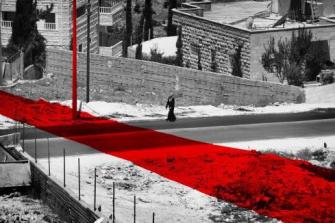Borderspace and Artistic Practice in Palestine Borders
Trans disciplinary artistic practices like BAW/TAF on the US- Mexico Border, exist in other borders as well, as conditions of borders make them sources of creativity, sensuality, and performativity. Out of the dichotomies of traditional methods, DAAR (Decolonizing Architecture Art Residency) in Palestine is an applied research practice and space. According to the definition they put forth for themselves:
DAAR is an architectural studio and art residency programme based in Beit Sahour, Palestine. DAAR’s work combines conceptual speculations and pragmatic spatial interventions, discourse and collective learning. DAAR explores possibilities for the reuse, subversion and profanation of actual structures of domination: from evacuated military bases to the transformation of refugee camps, from uncompleted governmental structures to the remains of destroyed villages.
Spatial practice can take many forms, including of the political intervention. The spatial toolbox that architecture has, when critically put in use, can function as an interventionist and be transformative. In the residency of DAAR 2011, artist/architect Amine Bech based her research on this very specific story of the map of Israel-Palestine, where she discusses the land (that is a buffer zone, because of the width of the ??) that is property of no one and lawless at the same time. The research also underlies the ‘borderline syndrome’ of the area.
DAAR, on the other hand, utilizes the design and architecture to intervene with the idea of camps, and to assuage their living conditions. Throughout its practice, DAAR researches and works on three camps, Dheisheh, Shufat and Fawwar camps, and more borderspaces in addition to the one that delineates the ‘Lawless Line’. In all these borderspaces examples, people are reduced to ‘bare life’, and space and its displaced subjects are deemed extraterritorial.
DAAR/ Amina Bech, Village Battir: The thickness of the line and Red Villa, and The Lawless Line.
The main ideology that Israel-Palestine borderspace reminds us is the idea of the frontier. The difference between the border and the frontier is undoubtedly important (see Prescott 1987). The former has typically been considered a line, whereas the latter has been constructed as an open and expansive space. Also, by some scholars (See Giddens, 2008) the former belongs to the modern nation state, whereas the latter belongs to the old empires. Rather than taking this kind of a difference approach of extension of one (traditional) and preservation of the other, which stabilizes the outer boundaries in both examples, I believe that every border condition turns into a frontier, visible in the examples of US-Mexico and Israel and Palestine. When border functions as a demarcating line, it turns into the ‘frontier’. Like Anzaldua (1998), scholars and creatives talk about being border dwellers, pointing to the original relationship between resistance and frontier. Line not only separates but also generates—the frontier idea emphasizes that the space of a border is based on the performance of the struggle while also being the source of re-generation.

